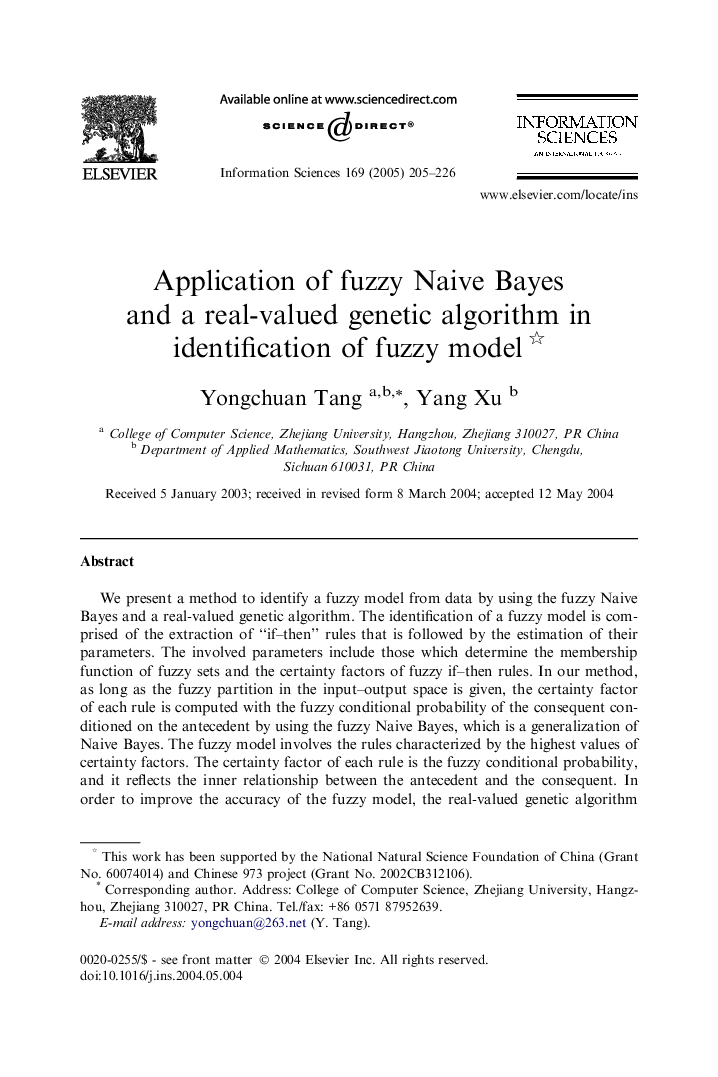| Article ID | Journal | Published Year | Pages | File Type |
|---|---|---|---|---|
| 9651066 | Information Sciences | 2005 | 22 Pages |
Abstract
We present a method to identify a fuzzy model from data by using the fuzzy Naive Bayes and a real-valued genetic algorithm. The identification of a fuzzy model is comprised of the extraction of “if-then” rules that is followed by the estimation of their parameters. The involved parameters include those which determine the membership function of fuzzy sets and the certainty factors of fuzzy if-then rules. In our method, as long as the fuzzy partition in the input-output space is given, the certainty factor of each rule is computed with the fuzzy conditional probability of the consequent conditioned on the antecedent by using the fuzzy Naive Bayes, which is a generalization of Naive Bayes. The fuzzy model involves the rules characterized by the highest values of certainty factors. The certainty factor of each rule is the fuzzy conditional probability, and it reflects the inner relationship between the antecedent and the consequent. In order to improve the accuracy of the fuzzy model, the real-valued genetic algorithm is incorporated into our identification process. This process concerns the optimization of the membership functions occurring in the rules. We just involve the parameters of membership function of the fuzzy sets into the real-valued genetic algorithm, since the certainty factor of each rule can be computed automatically. The performance of the model is shown for the backing-truck problem and the prediction of Mackey-Glass time series.
Related Topics
Physical Sciences and Engineering
Computer Science
Artificial Intelligence
Authors
Yongchuan Tang, Yang Xu,
